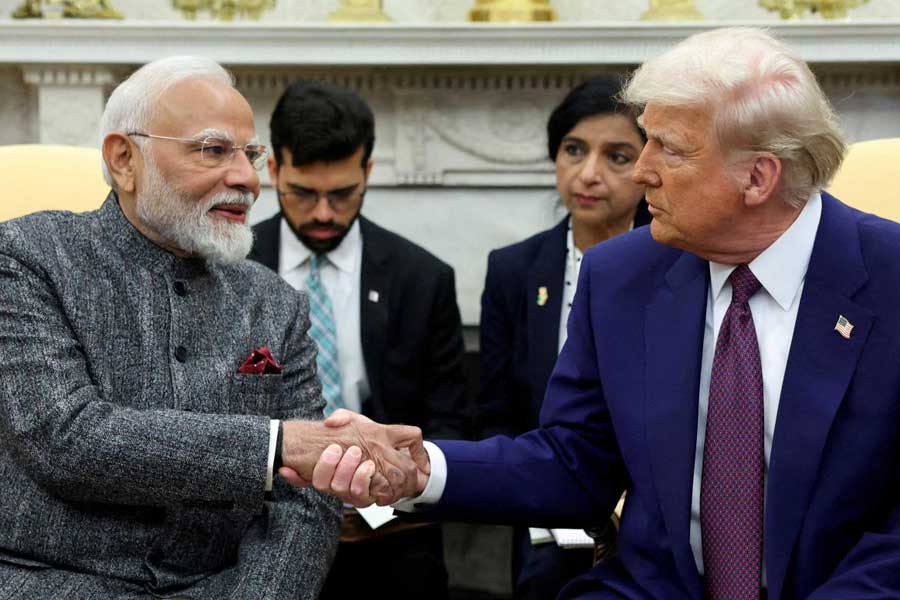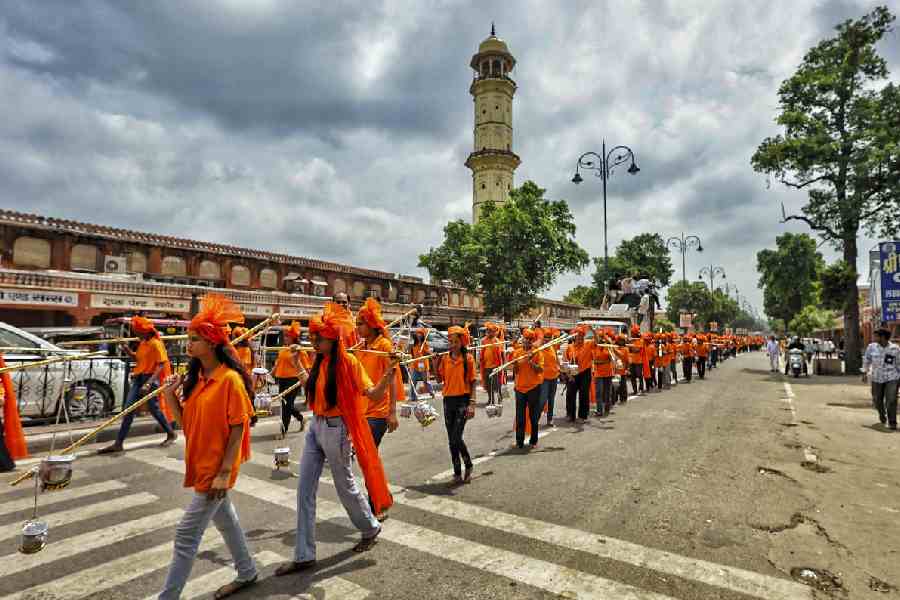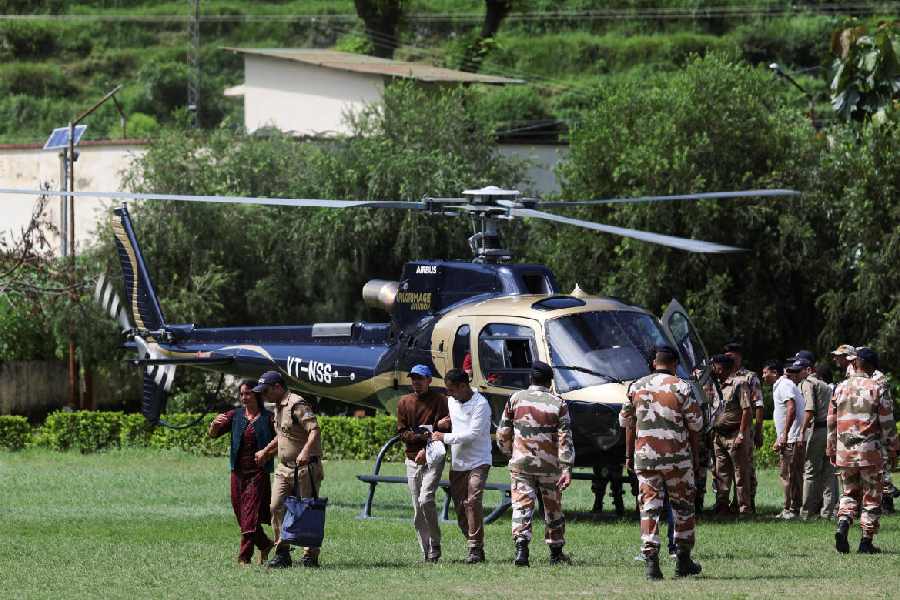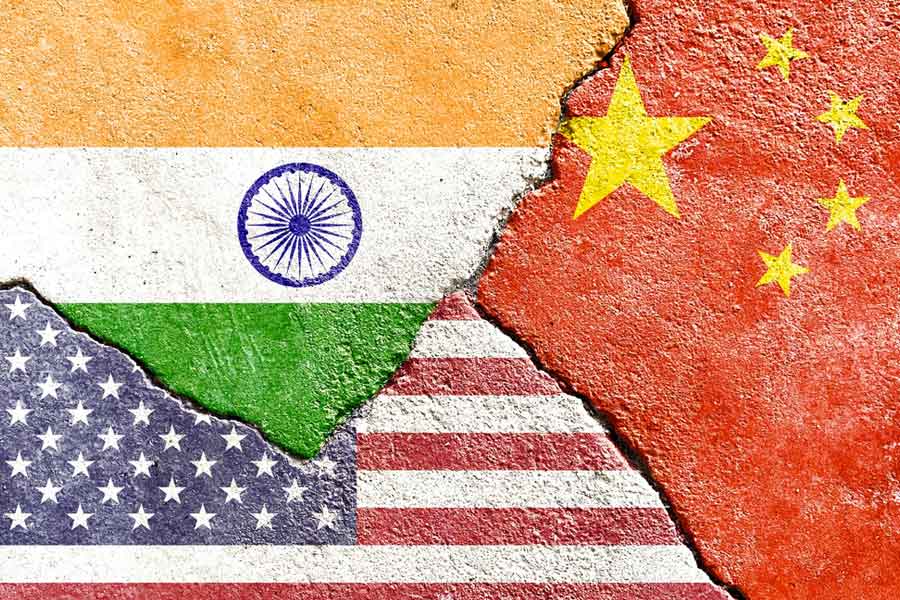
CINEMA OF ENCHANTMENT: PERSO-ARABIC GENEALOGIES OF THE HINDI MASALA FILM By Anjali Gera Roy, Orient BlackSwan, Rs 650
The 'dream sequence', a common element in Hindi cinema, can be a confounding experience. I have never quite understood the need for the hero and the heroine to charge towards each other, lip-syncing and gyrating simultaneously, in a picturesque location. Equally mysterious is the slow onset of the 'mist' during the escapade. The setting, be it a forest or a mountain, inevitably turns hazy before the hero and his beloved begin their charge. From where did Hindi cinema, I have often wondered, learn to symbolically associate mist with illusion? Anjali Gera Roy's book offers a clue to this puzzle. The mist, which serves as a visual metaphor for fantasy, is, Roy argues, proof of Hindi cinema's debt to such Perso-Arabic narrative components as qissa, dastan and tilism (enchantment).
Cinema of Enchantment, however, goes beyond slaking personal curiosities. This is an important work that seeks to acknowledge the Perso-Arabic genealogical influences on Hindi cinema without undermining the contributions of Hindu mythologies, epics and styles of representation to the craft of story-telling in this genre. Such an attempt at reclamation has been necessitated by the marginalization of the history that shows that tilism formed the central framework upholding the edifice of the masala film.
Roy has been careful not to omit the motive behind the marginalization. The privileging of ostensibly Hindu sources over their Persian/Arabic counterparts in the reconstruction of cinematic history fits perfectly well with the specific design of co-opting this medium of entertainment into the nationalist discourse that seeks to represent India and its cultural traditions as a homogeneous, Hindu entity. (Roy cites scholarly sources to show that Dadasaheb Phalke's Hindu mythological, Raja Harishchandra, touted as the first Indian film, has possibly been preceded by Hiralal Sen's unreleased Alibaba and Forty Thieves.) Underlining the syncretic lineage of Hindi cinema, as Roy has done with her research on the Islamicate influences on Hindi cinema's notions of time and space, its preferred style of characterization and story-telling as well as its choice of language, is especially relevant to these times when India's secular moorings, not just in the sphere of popular entertainment but also in its political space, are being threatened with revisionism.
Roy's explanation of the evolution of Perso-Arabic narrative tropes is especially useful for lay readers. Upon their assimilation after their arrival in India in the 11th century, the terms ' dastan' and 'qissa' , which signified separate genres in Persian, came to be used interchangeably to denote stories. The dastangoi influence on Hindi cinema, which gives ita composite identity, can be traced to Parsi theatre that preceded the former as the dominant form of public entertainment. The migration of Urdu munshis and poets as well as actors and film-makers from West Punjab before and after Partition infused the structure and language of Hindi cinema with such Perso-Arabic conventions. Thus, Urdu was accorded the honour of being the language of Hindi cinema. Urdu continues to be used in film titles. The practice of employing trainers to improve the Urdu diction of non-Hindi speaking actors remains undisturbed.
The Perso-Arabic lineage even informs models of cinematic representation. The templates of characters such as the hero, the villain or, for that matter, the friend and the seductress trace their roots to the dastan tradition. Roy reveals that the famed 'Item Number' - the colloquial term used to describe the sexually suggestive song-and-dance sequence performed by starlets, models and white women these days - is not quite original. The performance mirrors that of the wine-pouring, dancing zuleikhas (temptresses) of the dastans.
However, gaps exist in the synthesis of the two different sensibilities, thereby transforming Hindi cinema into a site of occasional conflict. Roy highlights one such area of contestation. "[T]he Hindi film," she writes, "polarises the sufi and Bhakti into languages of desire and worship respectively." Sultry Laila, the much-desired heroine of Persian poetry - the sufi poet seeks to dissolve himself in her darkness - is thus fetishized as the Muslim beloved who is the object of male lust.
Roy's readership is likely to be limited because the stifling prose is certainly an impediment. Sample this: "The construction of an orientalist anti-mimeticism to elucidate Hindi cinema's turn from reality by invoking the non-mimetic order permeating Indian performing arts can homogenise what are in fact disparate performative traditions."
An equally objectionable slip is the spelling of Pramathesh Barua, who metamorphosizes into Prathamesh Barua, not once but on two occasions (Pages 63 and 67).










